PDF chapter test TRY NOW
Definitions:
- Virus: Viruses are defined as infectious agents that can replicate inside a host cell.
- Virology: Virology deals with studying various types of viruses, their characteristics and viral diseases.
- Viroids: The protein-free pathogenic RNA of the virus is viroids. They are found in plant cells and causes diseases in plants.
- Virion: A complete virus particle consists of an RNA or DNA core with a protein coat, sometimes with external envelopes, which is the extracellular infectious form of a virus.
The term virus was derived from Latin. Virus refers 'Venom; or poisonous fluid. The term virus was coined by Martinus W. Beijerinck, in 1898. Viruses are non-cellular and self-replicating parasites, surrounded by a protective coat of protein called Capsid, which covers a genetic material (central nucleic acid molecule, DNA or RNA). The amount of protein differs from 60% to 95%, and the remaining is a nucleic acid.
In T4 bacteriophage, the nucleic acid is DNA, and in the Tobacco mosaic virus (TMV), the nucleic acid is found in the form of RNA. A complete virus particle is called a virion. A virus is considered as living and also non-living thing. Virus are inactive outside the host cell, and they become active when present inside the host cell.
They grow and multiply in their hosts. The virus's size varies over a wide range from 18-400nm and is the smallest among the infective agents. Their hosts include plants, animals, human beings and bacteria. Transferring of virus between hosts will occur quickly.
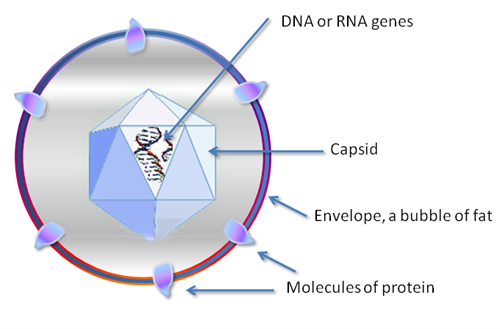
Structure of virus
1. Living and non-living characteristics:
Viruses exhibit both living and non-living characteristic features.
Living characteristic features of viruses:
- They have the nucleic acid either RNA or DNA, which means the genetic material can replicate.
- A virus can multiply in the living cells of the host.
- They can attack specific hosts.
Non-living characteristics of viruses:
- Viruses remain as inert material outside their hosts.
- They are devoid of cell membrane and cell wall. Viruses are devoid of cellular organelles like ribosomes, mitochondria, etc.
- They are in the form of crystallisation.
- Viruses do not respire and do not metabolise.
2. Types of virus:
The virus can be classified based on the kind of host on which they survive.
Thus, viruses are broadly classified into,
- Plant virus
- Animal virus
- Bacteriophages
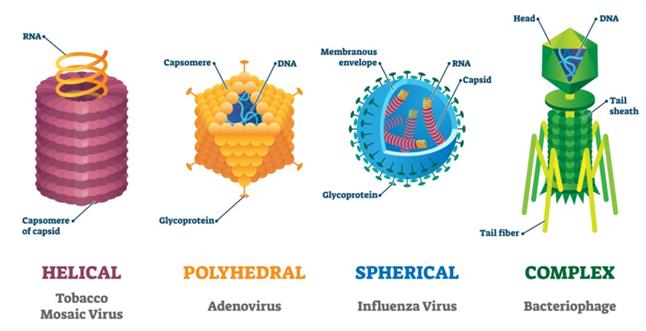
Types of viruses
1. Plant virus:
Viruses that infect plants, i.e., having plants as their host, are called plant viruses.
Example:
Tobacco mosaic virus, Cauliflower mosaic virus, Potato virus.
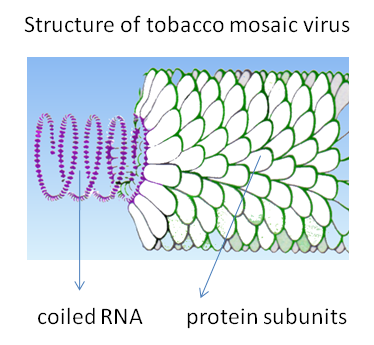
Structure of Tobacco mosaic virus
2. Animal virus:
Viruses that infect animals, i.e., having animals as their host, are called animal viruses.
Example:
Adenovirus, Retrovirus, Influenza virus, Poliovirus.
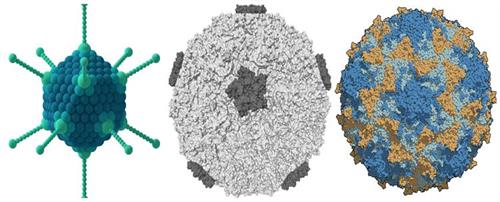
Left to right: Adenovirus, Rhinovirus and Poliovirus
3. Bacteriophages:
A bacteriophage is a type of virus that infects bacteria and reproduces inside it. The word "bacteriophage" literally means "bacteria eater" because bacteriophages destroy their host cells. There is a protein capsule around an RNA or DNA genome. Shape of the capsid (capsule) can be isohedral, filamentous, or head-tail in form.
Example:
T4bacteriophage
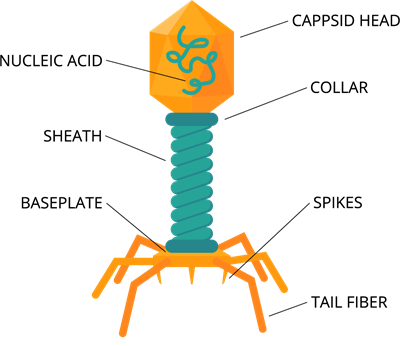
Structure of bacteriophage
A typical bacteriophage is made up of a polyhedral head, a short collar and a spiral tail.
- Head : The head consists of 2000 capsomeres with double-stranded DNA enclosed within.
- Tail : The tail consists of a hollow inner tube surrounded by a contractile sheath with 24 annular rings. The distal end consists of a basal plate with tail fibres at each corner. The bacteriophage attaches to the bacteria with the help of these tail fibres.
